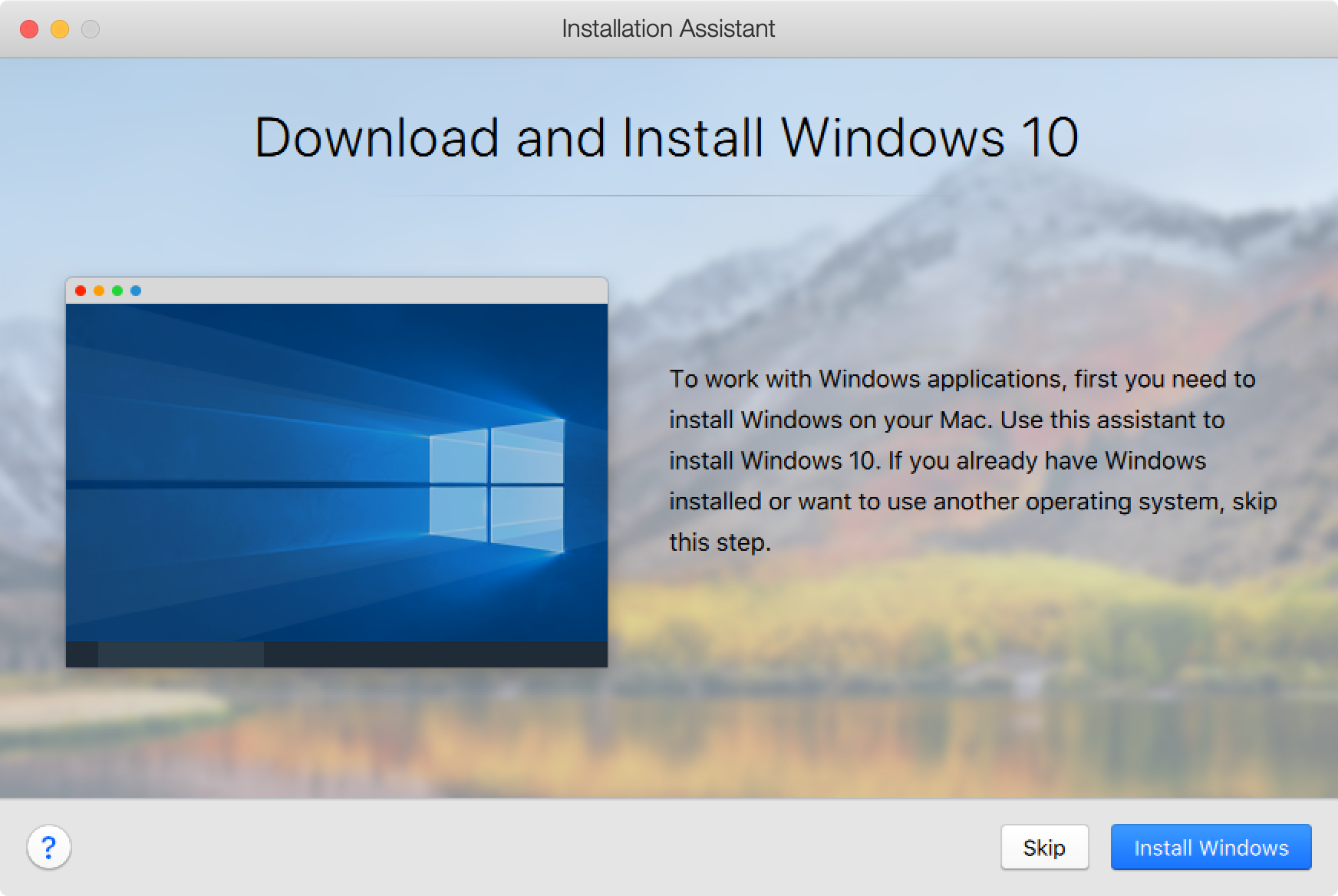Transfer Microsoft Office To New Computer Mac
- Transfer Microsoft Office To New Mac
- Transfer Office From One Computer To Another
- Deactivate Office 2019 Move To New Computer
Summary: The blog explains the step-by-step process to Transfer Outlook Data to a New Computer (OST, PST). The entire procedure is divided into different sections to make it easier for users to accomplish the task without losing any of the mailbox items. Jan 16, 2020 FPP, HUP, PKC, POSA and ESD only are the License types which allows Microsoft Office transfer to a new computer. To know whether the License you own supports Office transfer or not, follow the steps below: Press button to launch Windows Start. Type cmd press CTRL + SHIFT + ENTER to open it as an administrator.
Migration Assistant copies all of your files to your new Mac so that you don't have to copy your files manually.
- If your files are currently on a Windows PC, follow the PC migration steps instead.
- If your new Mac is using OS X Mountain Lion v10.8 or earlier, follow the Mountain Lion migration steps instead.
Check software, settings and power
- Install all available Apple software updates on both Mac computers. Install any updates for your third-party apps as well.
- Make sure that your old Mac is using OS X Lion or later.
- Make sure that your old Mac has a computer name: Choose Apple menu > System Preferences, then click Sharing and check the Computer Name field.
- Connect both computers to AC power.
Connect the computers to each other
- If both computers are using macOS Sierra or later, just make sure that they're near each other and have Wi-Fi turned on. If either is using OS X El Capitan or earlier, connect them to the same network using Wi-Fi or Ethernet.
- Or connect them using target disk mode and the appropriate cable or adapter. Then start up your old computer in target disk mode.
- Or connect your new Mac to a Time Machine backup of your old Mac.
Transfer Microsoft Office To New Mac
Use Migration Assistant
On your new Mac:

- Open Migration Assistant, which is in the Utilities folder of your Applications folder.
- Click Continue.
- When asked how you want to transfer your information, select the option to transfer from a Mac, Time Machine backup or startup disk.
- Click Continue.
On your old Mac:
If you started your old Mac in target disk mode or are migrating from a Time Machine backup, skip these four steps.
- Open Migration Assistant.
- Click Continue.
- When asked how you want to transfer your information, select the option to transfer to another Mac.
- Click Continue.
On your new Mac:
- When asked to select a Mac, Time Machine backup or other startup disk, click the appropriate icon.
- Click Continue. You might see a security code.
On your old Mac:
If you started your old Mac in target disk mode or are migrating from a Time Machine backup, skip these two steps.
- If you see a security code, make sure that it's the same code as on your new Mac.
- Click Continue.
On your new Mac:
- You should see a list of backups organised by date and time. Choose the backup that you want to use.
- Click Continue.
Continuing on your new Mac:
- Select the information to transfer.
- Click Continue to start the transfer. If you have a lot of content, the transfer might take several hours to finish.

In the example above, John Appleseed is a macOS user account.If you transfer an account that has the same name as an account on your new Mac, you're asked to rename the old account or replace the one on your new Mac. If you rename, the old account appears as a separate user on your new Mac, with a separate home folder and login. If you replace, the old account overwrites the account on your new Mac, including everything in its home folder.
After Migration Assistant has finished, log in to the migrated account on your new Mac to see its files. If you're not keeping your old Mac, learn what to do before you sell, give away or trade in your old Mac.
Migration Assistant copies all of your files to your new Mac so that you don't have to copy your files manually.
- If your files are currently on a Windows PC, follow the PC migration steps instead.
- If your new Mac is using OS X Mountain Lion v10.8 or earlier, follow the Mountain Lion migration steps instead.
Check software, settings, and power
- Install all available Apple software updates on both Mac computers. Install any updates for your third-party apps as well.
- Make sure that your old Mac is using OS X Lion or later.
- Make sure that your old Mac has a computer name: Choose Apple menu > System Preferences, then click Sharing and check the Computer Name field.
- Connect both computers to AC power.
Connect the computers to each other
- If both computers are using macOS Sierra or later, just make sure that they're near each other and have Wi-Fi turned on. If either is using OS X El Capitan or earlier, connect them to the same network using Wi-Fi or Ethernet.
- Or connect them using target disk mode and the appropriate cable or adapter. Then start up your old computer in target disk mode.
- Or connect your new Mac to a Time Machine backup of your old Mac.
Use Migration Assistant
On your new Mac:
Jan 22, 2017 Microsoft office stopped working on my mac. I can't open excel, powerpoint, or word, I have a mac book air -Answered by a verified Mac Support Specialist We use cookies to give you the best possible experience on our website.  Excel for Mac crashes and slow performance FIXED Excel does not respond when using 'Save as Picture' WORKAROUND Excel prompts you to grant access to files and then hangs or shows a warning that it cannot open the.xlsx file because the format or extension is not valid. Known issues, changed functionality, and blocked or discontinued features. First, make sure Excel is not running or close it completely. Then hold the Windows key and press “ R ” to run the dialogue box. In the search box type excel.exe /s then press ENTER. Now you will see Excel. The application Microsoft Excel quit unexpectedly. Mac OS X and other applications are not affected. Click relaunch to launch the application again. Click report to see more details or send a report to Apple. Dec 12, 2015 I have Mac El Capitan and Office 2016 on my two mac's. On one of them, Excel suddenly stopped responding. I can barely open the application but cannot create any new document, or open an existing one. All menus are not responding. I have to force quit.
Excel for Mac crashes and slow performance FIXED Excel does not respond when using 'Save as Picture' WORKAROUND Excel prompts you to grant access to files and then hangs or shows a warning that it cannot open the.xlsx file because the format or extension is not valid. Known issues, changed functionality, and blocked or discontinued features. First, make sure Excel is not running or close it completely. Then hold the Windows key and press “ R ” to run the dialogue box. In the search box type excel.exe /s then press ENTER. Now you will see Excel. The application Microsoft Excel quit unexpectedly. Mac OS X and other applications are not affected. Click relaunch to launch the application again. Click report to see more details or send a report to Apple. Dec 12, 2015 I have Mac El Capitan and Office 2016 on my two mac's. On one of them, Excel suddenly stopped responding. I can barely open the application but cannot create any new document, or open an existing one. All menus are not responding. I have to force quit.
- Open Migration Assistant, which is in the Utilities folder of your Applications folder.
- Click Continue.
- When asked how you want to transfer your information, select the option to transfer from a Mac, Time Machine backup, or startup disk.
- Click Continue.
On your old Mac:
If you started your old Mac in target disk mode or are migrating from a Time Machine backup, skip these four steps.
- Open Migration Assistant.
- Click Continue.
- When asked how you want to transfer your information, select the option to transfer to another Mac.
- Click Continue.
On your new Mac:
- When asked to select a Mac, Time Machine backup, or other startup disk, click the appropriate icon.
- Click Continue. You might see a security code.
On your old Mac:
If you started your old Mac in target disk mode or are migrating from a Time Machine backup, skip these two steps.
- If you see a security code, make sure that it's the same code as on your new Mac.
- Click Continue.
On your new Mac:
- You should see a list of backups organized by date and time. Choose the backup that you want to use.
- Click Continue.
Transfer Office From One Computer To Another
Continuing on your new Mac:
- Select the information to transfer.
- Click Continue to start the transfer. If you have a lot of content, the transfer might take several hours to finish.
In the example above, John Appleseed is a macOS user account. If you transfer an account that has the same name as an account on your new Mac, you're asked to rename the old account or replace the one on your new Mac. If you rename, the old account appears as a separate user on your new Mac, with a separate home folder and login. If you replace, the old account overwrites the account on your new Mac, including everything in its home folder.
Deactivate Office 2019 Move To New Computer
After Migration Assistant is done, log in to the migrated account on your new Mac to see its files. If you're not keeping your old Mac, learn what to do before you sell, give away, or trade in your old Mac.